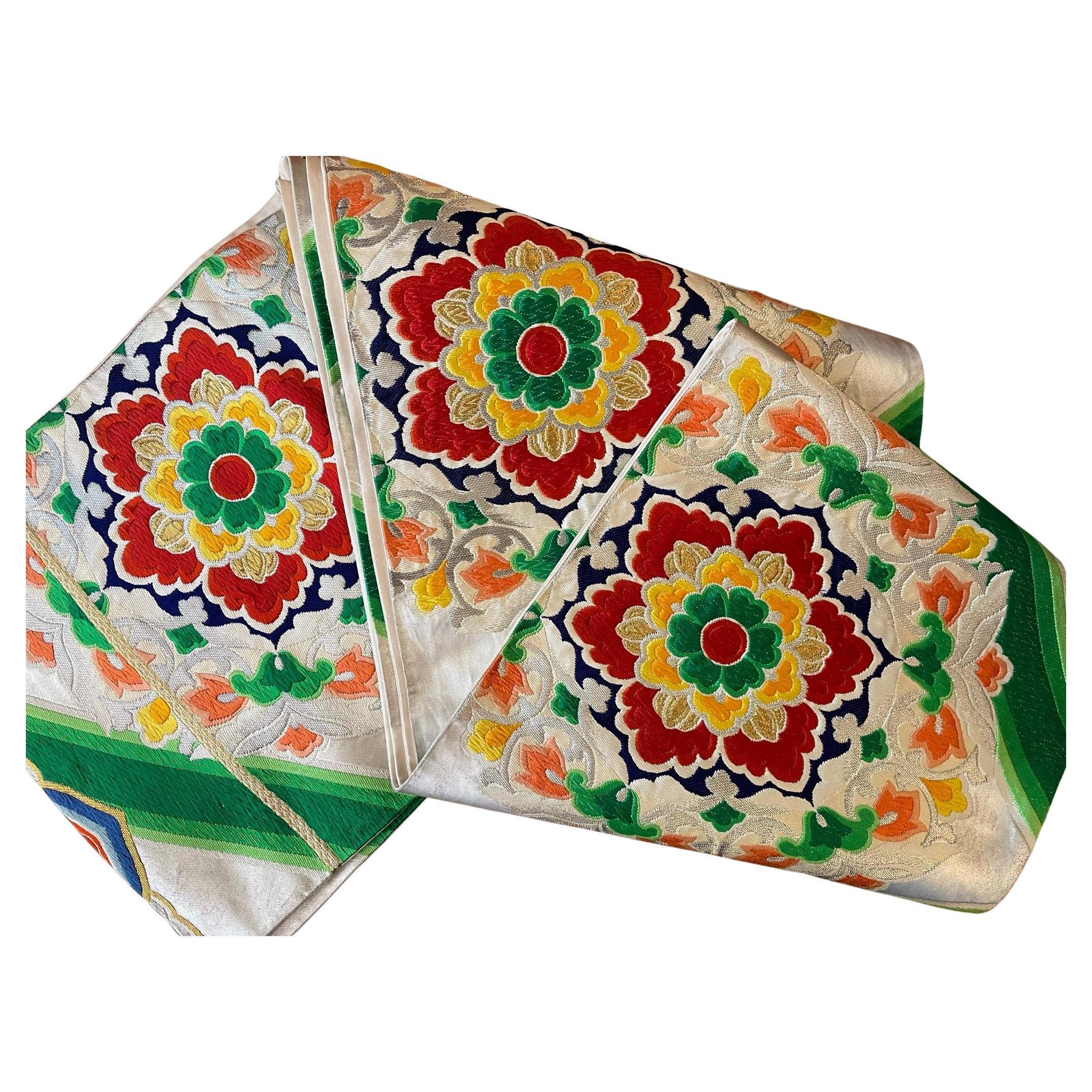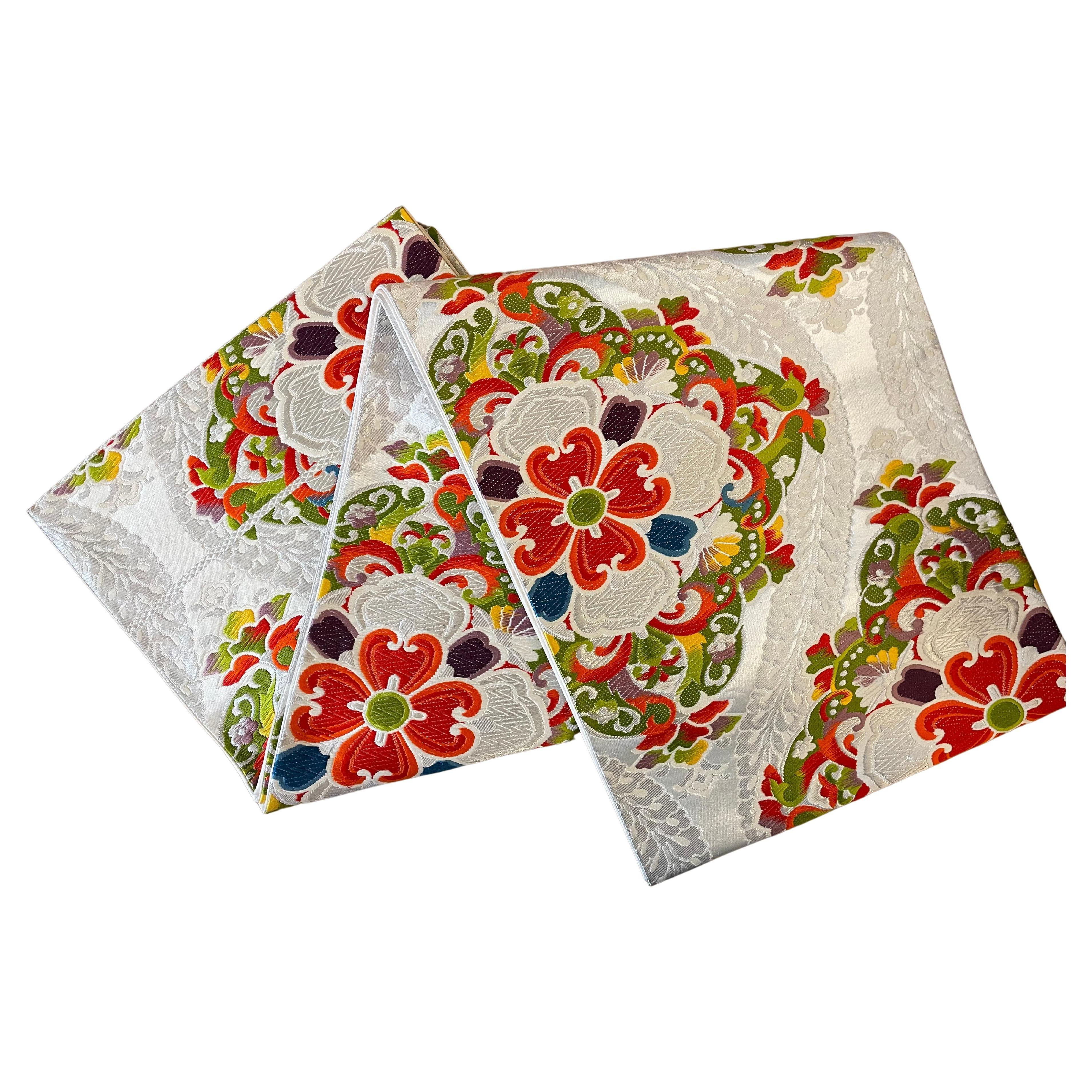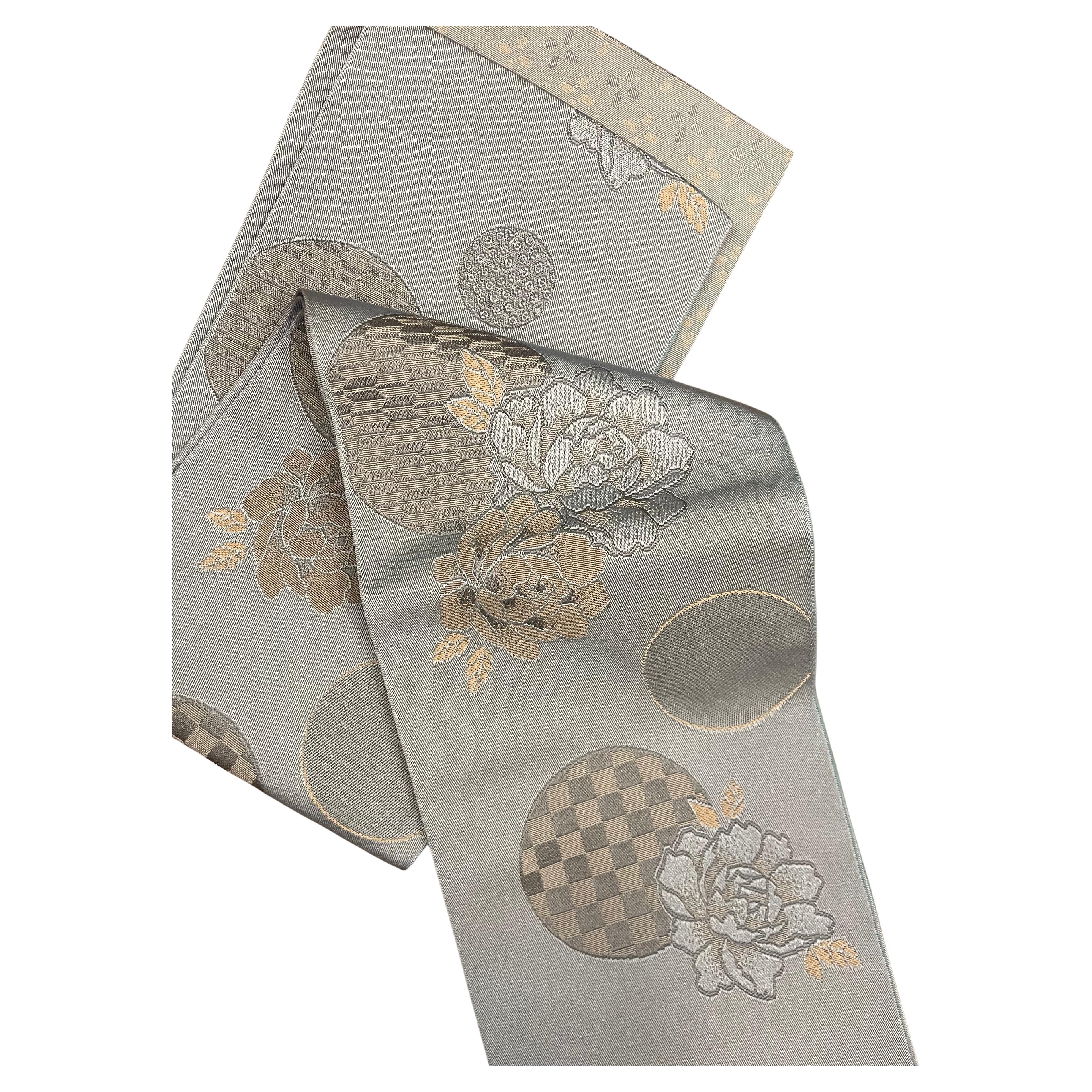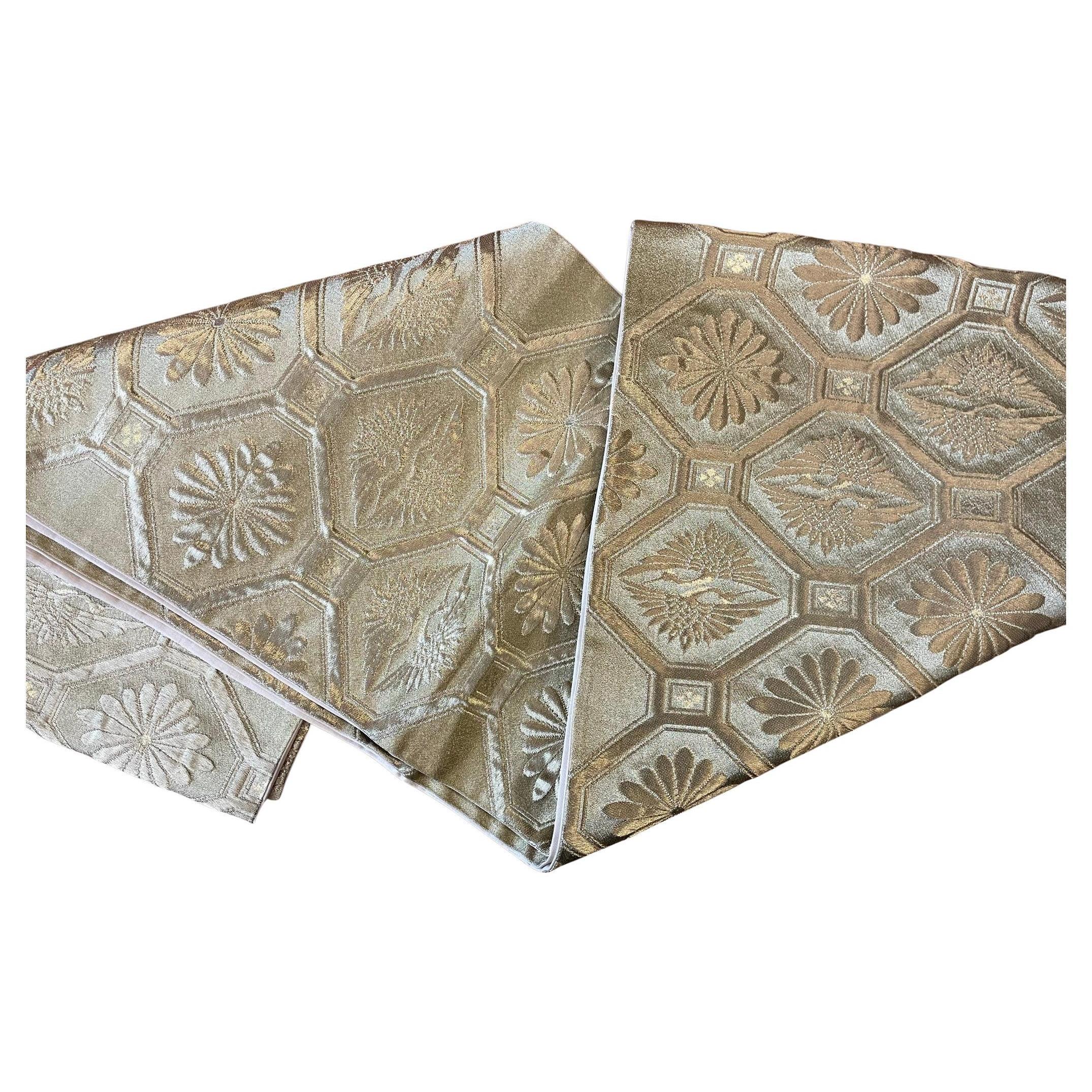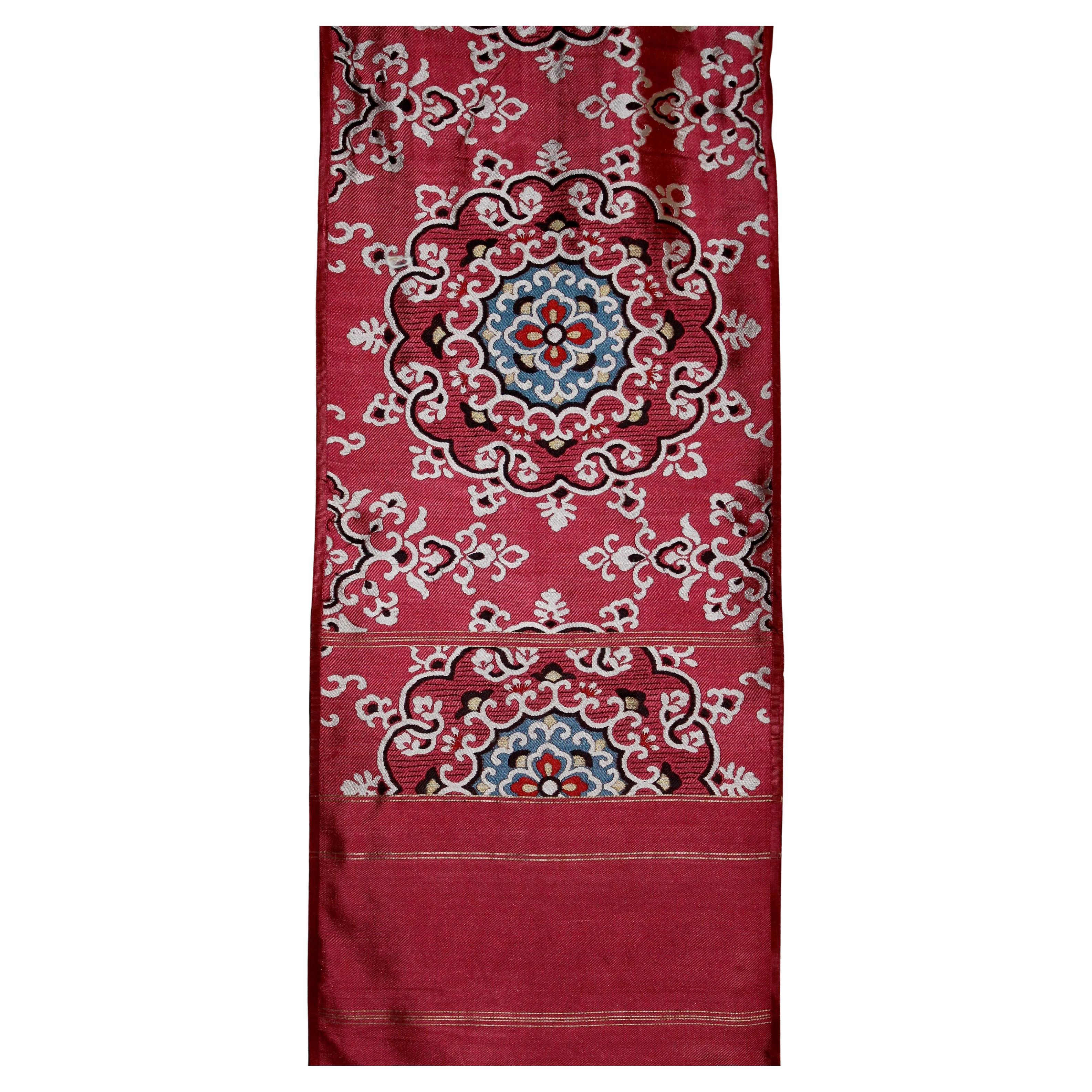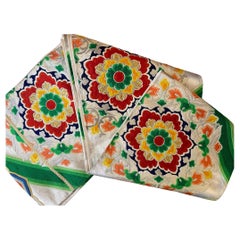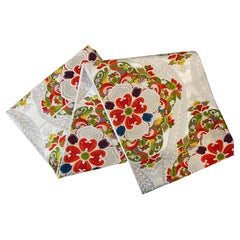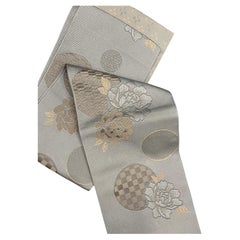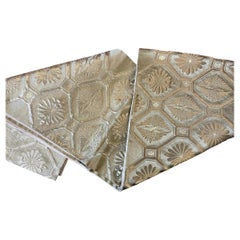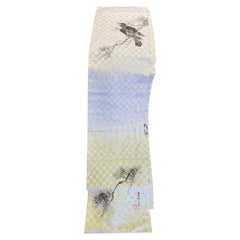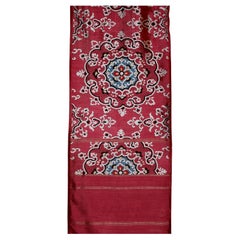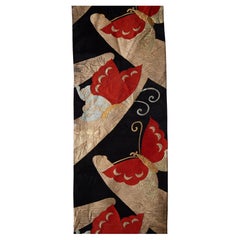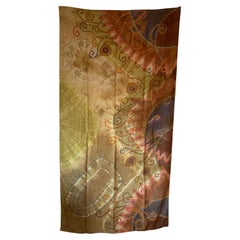Items Similar to Antique Silk Japanese Kimono Belt, 1970s
Want more images or videos?
Request additional images or videos from the seller
1 of 12
Antique Silk Japanese Kimono Belt, 1970s
$236.29
£177.11
€200
CA$324.62
A$362.41
CHF 189.90
MX$4,436.27
NOK 2,411.71
SEK 2,273.93
DKK 1,522.47
About the Item
This is a Hitoe Obi made in Japan around 1970s.
Obi is a belt of varying size and shape worn with both traditional Japanese clothing like Kimono.Obi are categorised by their design, formality, material, and use, and can be made of a number of types of fabric, with heavy brocade weaves worn for formal occasions, and some lightweight silk obi worn for informal occasions.
Durant la saison chaude et humide de l'été (fin mai à début septembre), les kimonos non doublés et légers (hitoe) ainsi que les yukata sont associés à ce type de ceinture souple, sans doublure et parfois réversible. (Wikipedia)
Dimensions: this obi is 416cm long and 33cm wide.
- Dimensions:Height: 163.78 in (416 cm)Width: 13 in (33 cm)Depth: 0.12 in (3 mm)
- Style:Showa (Of the Period)
- Materials and Techniques:
- Place of Origin:
- Period:
- Date of Manufacture:1970
- Condition:This Kimono belt has some blue stains of paint. You can see from the photos. This is why we make the price less than usual.
- Seller Location:Paris, FR
- Reference Number:1stDibs: LU6325234203482
About the Seller
5.0
Vetted Professional Seller
Every seller passes strict standards for authenticity and reliability
1stDibs seller since 2022
50 sales on 1stDibs
- ShippingRetrieving quote...Shipping from: Paris, France
- Return Policy
Authenticity Guarantee
In the unlikely event there’s an issue with an item’s authenticity, contact us within 1 year for a full refund. DetailsMoney-Back Guarantee
If your item is not as described, is damaged in transit, or does not arrive, contact us within 7 days for a full refund. Details24-Hour Cancellation
You have a 24-hour grace period in which to reconsider your purchase, with no questions asked.Vetted Professional Sellers
Our world-class sellers must adhere to strict standards for service and quality, maintaining the integrity of our listings.Price-Match Guarantee
If you find that a seller listed the same item for a lower price elsewhere, we’ll match it.Trusted Global Delivery
Our best-in-class carrier network provides specialized shipping options worldwide, including custom delivery.More From This Seller
View AllJapanese Antique Silk Kimono Belt, 1960s
Located in Paris, FR
This is a Fukuro Obi made in Japan around 1960s.
It is made with Silk and it is in good condition.
Obi is a belt of varying size and shape worn with both traditional Japanese clothing like Kimono.Obi are categorised by their design, formality, material, and use, and can be made of a number of types of fabric, with heavy brocade weaves worn for formal occasions, and some lightweight silk obi worn for informal occasions.
Fukuro obi are slightly less formal than maru obi...
Category
Late 20th Century Japanese Showa Antiquities
Materials
Silk
$359 Sale Price
20% Off
Japanese Silk Kimono Belt Fukuro-Obi 1970s /Table Runner
Located in Paris, FR
This is a Fukuro Obi made in Japan around 1970s.
It is made with Silk and it is in good condition.
Obi is a belt of varying size and shape worn with both traditional Japanese clothing like Kimono.Obi are categorised by their design, formality, material, and use, and can be made of a number of types of fabric, with heavy brocade weaves worn for formal occasions, and some lightweight silk obi worn for informal occasions.
Fukuro obi are slightly less formal than maru obi...
Category
Late 20th Century Japanese Showa Antiquities
Materials
Silk
$340 Sale Price
20% Off
Japanese Half Kimono Belt Hanhaba Obi Sky Blue with Rose 1980s
Located in Paris, FR
This is a Japanese beautiful Kimono belt called 'Han haba obi'.
Both side are with motifs but different motifs. It is a belt for kimono but you can use as a table runner or wall deco...
Category
Vintage 1980s Japanese Showa Antiquities
Materials
Silk
Japanese Silk Obi Kimono Belt /Table runner 1970s Gold Two Cranes
Located in Paris, FR
This is a Fukuro Obi made in Japan around 1970s.
It is made with Gold Silk (Kinshi) and it is in good condition.
Two cranes walking or flying together is the ultimate symbol of lo...
Category
Vintage 1970s Japanese Showa Decorative Art
Materials
Silk
$396 Sale Price
20% Off
Japanese Silk Obi Belt/ Table Runner 1960s Dark Red
Located in Paris, FR
This is a Fukuro Obi made in Japan around 1960s.
It is made with silk and it is in good condition.
Obi is a belt of varying size and shape worn with both traditional Japanese clothing like Kimono.Obi are categorised by their design, formality, material, and use, and can be made of a number of types of fabric, with heavy brocade weaves worn for formal occasions, and some lightweight silk obi worn for informal occasions.
Fukuro obi are slightly less formal than maru obi...
Category
Vintage 1960s Japanese Showa Decorative Art
Materials
Silk
Japanese Silk Haori Poppy Multi Colours 1980s Showa
Located in Paris, FR
This is a silk jacket which was made in Japan.
It was made in Showa era around 1980s.
The haori is a traditional Japanese hip- or thigh-length jacket worn over a kimono. Resembling ...
Category
Vintage 1980s Japanese Showa Antiquities
Materials
Silk
You May Also Like
Japanese Signed Stamped Hand Drawn Silk Obi Sash Belt with Crow, Mid-1900
Located in Studio City, CA
A wonderful handmade vintage silk Obi sash/ belt featuring a rather unique hand-drawn scene with a crow and trees.
Signed and stamped by the artist...
Category
Mid-20th Century Japanese Showa Textiles
Materials
Silk
Signed Silk Brocade Obi
Located in Sharon, CT
Very large (188") hand woven silk brocade Obi.
Category
Antique Late 19th Century Japanese Meiji Textiles
Materials
Silk
$2,500
Vintage Japanese Obi Textile, Mid 20th C
Located in Istanbul, TR
An obi in very good condition that can be utilized as a table runner, wall hanging.
Category
Mid-20th Century Japanese Pillows and Throws
Materials
Silk
Hand-Crafted Shantung Silk Textile with Stunning Detailing
Located in Jimbaran, Bali
A wonderful hand-crafted shantung silk textile from Malaysia with stunning detailing and shades. Shantung silk is a medium-weight, plain-weave silk fabric which is woven from irregul...
Category
21st Century and Contemporary Malaysian Other Textiles
Materials
Silk
Rare Spectacular Hand-Embroidered Silk Japanese Kimono
Located in Brea, CA
This highly collectable spectacular rare kimono has detailed hand-embroidery throughout accented . This ceremonial Japanese kimono is hand sewn and hand-quilted throughout.
Category
Early 20th Century Chinese Chinese Export Antiquities
Materials
Silk
Japanese Buddhist Monk Priest 7 Column Silk Brocade Kesa Ceremonial Temple Robe
Located in Studio City, CA
A wonderful, beautifully ornamented and somewhat rare fully intact Japanese Buddhist monk/ priest's Kesa ceremonial silk robe featuring various colorful birds in flight.
Kesa (which came from the Chinese word "kasaya") robes have been handmade/handstitched by monks/priests as an act of devotion as ceremonial robes for centuries in various Asian cultures (Japanese, Chinese, Korean, Vietnamese, Indian, etc.). The kesa is a rectangular garment designed to be worn over the left shoulder (see example image). The robes are made (often in a patchwork column pattern ranging from five, seven, nine or more pannels) specifically for fully ordained Buddhist monks, priests and nuns and are made from donations of exquisite textiles from wealthy patrons of Japanese Buddhist temples. The robes were used in daily ceremonies, temple gatherings, and private meditation.
Antique Kesa robes...
Category
Mid-20th Century Japanese Showa Textiles
Materials
Textile, Brocade, Silk
More Ways To Browse
Japanese Fabric Art
1970s Japan Furniture
Japanese Kimono
Japanese Used Kimono
Japanese Weaving
Japanese Kimono Art
20th Century Japanese Silk
Japanese Silk Brocade
Japanese Obi
Japanese Kimono Fabric
Kimono Obi
Japanese Kimono Antiques
Vintage Silk Brocade Fabric
Silk Obi
Vintage Kimono Fabrics
Japanese Silk Obi
Brocade Kimono
Obi Fabric
